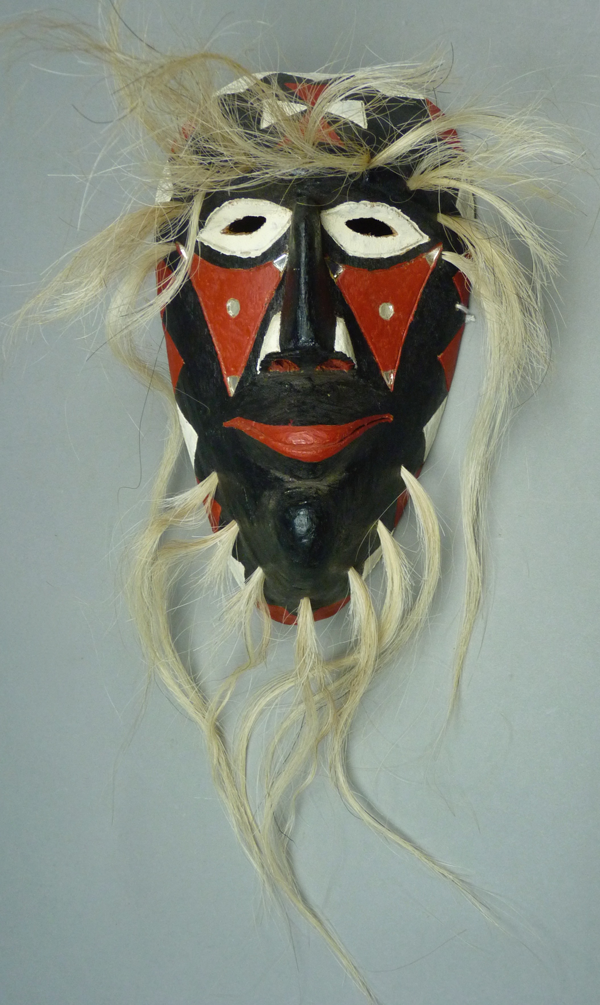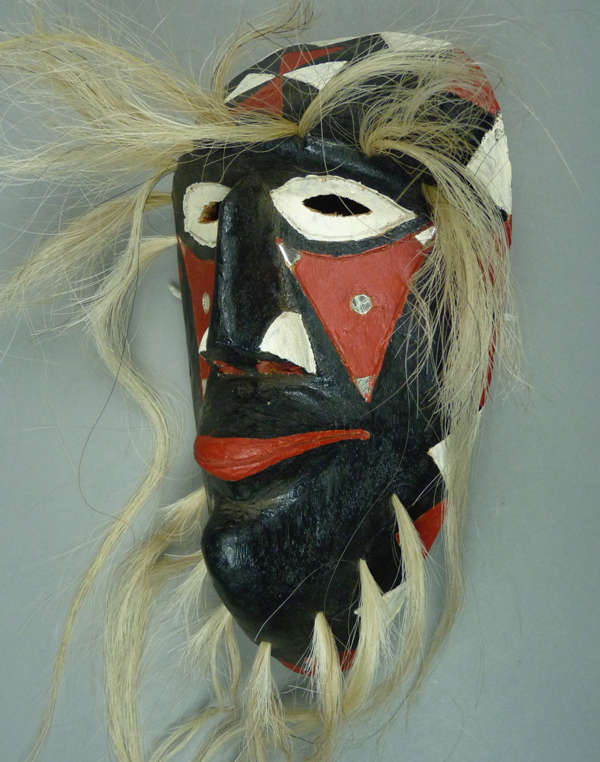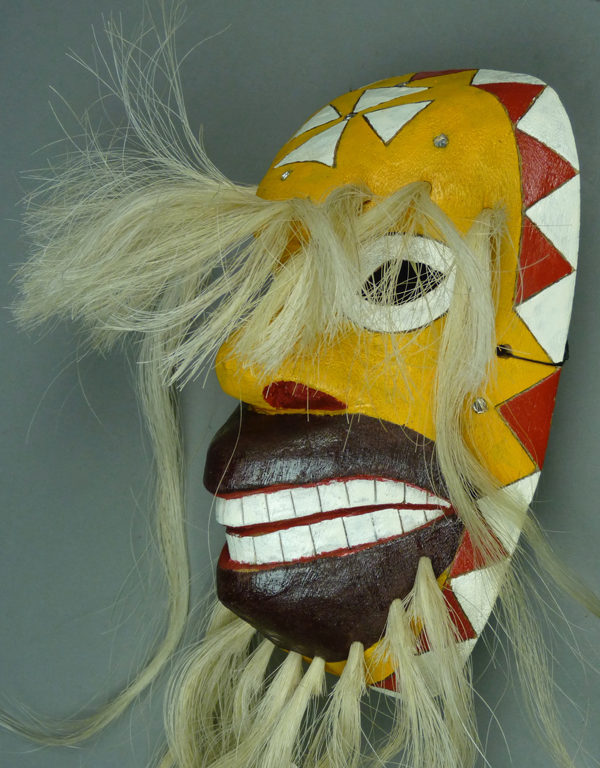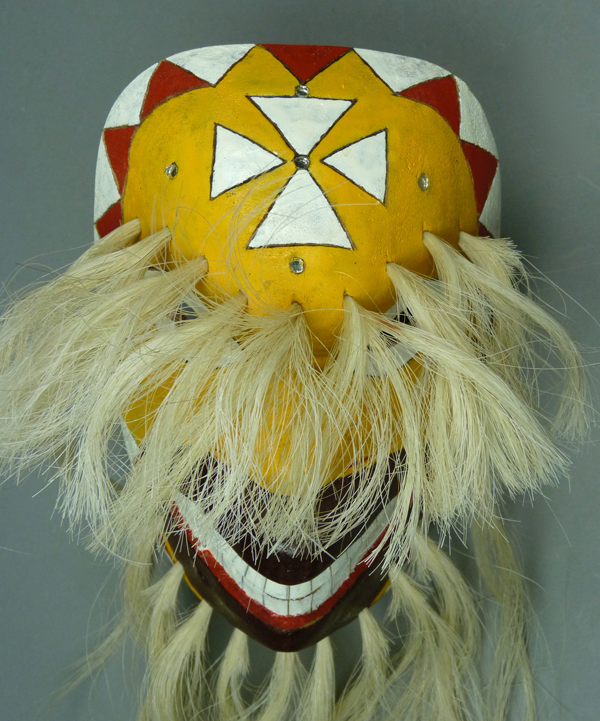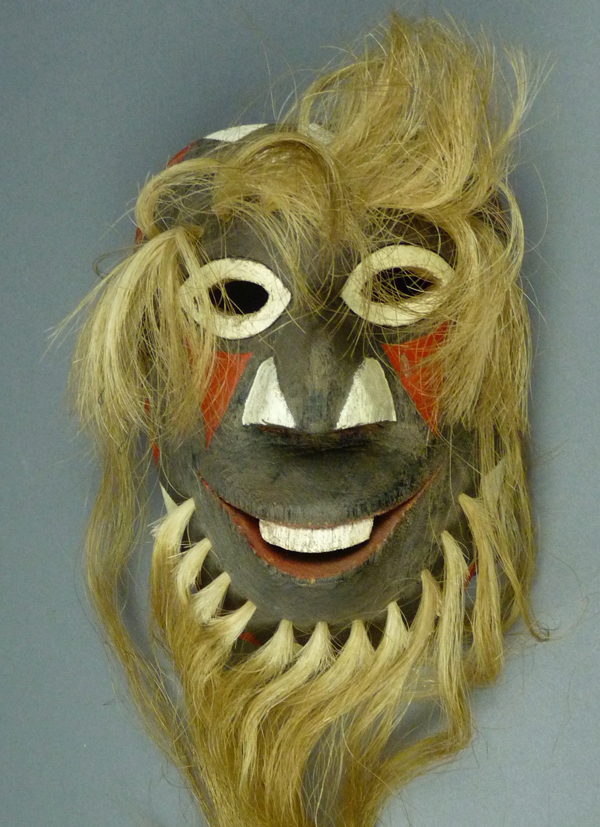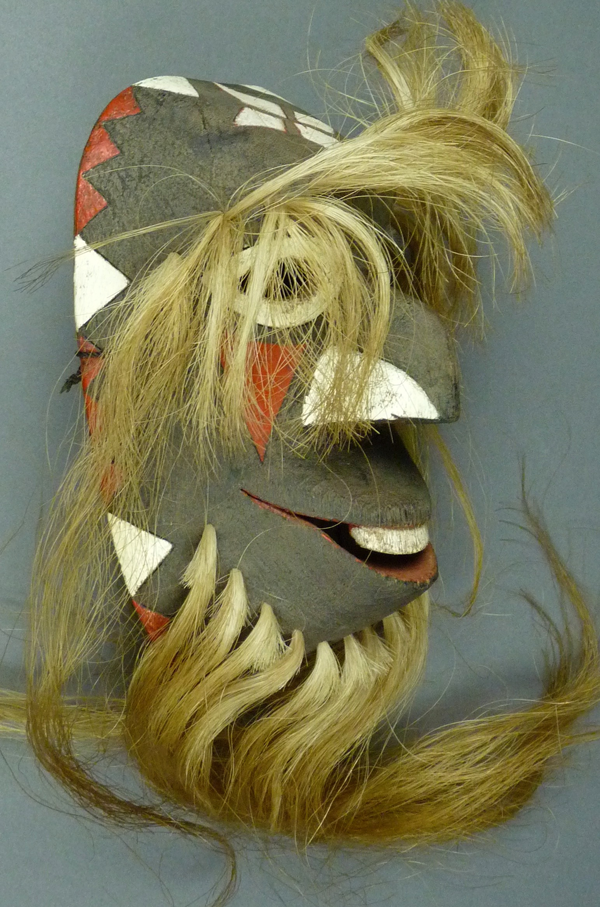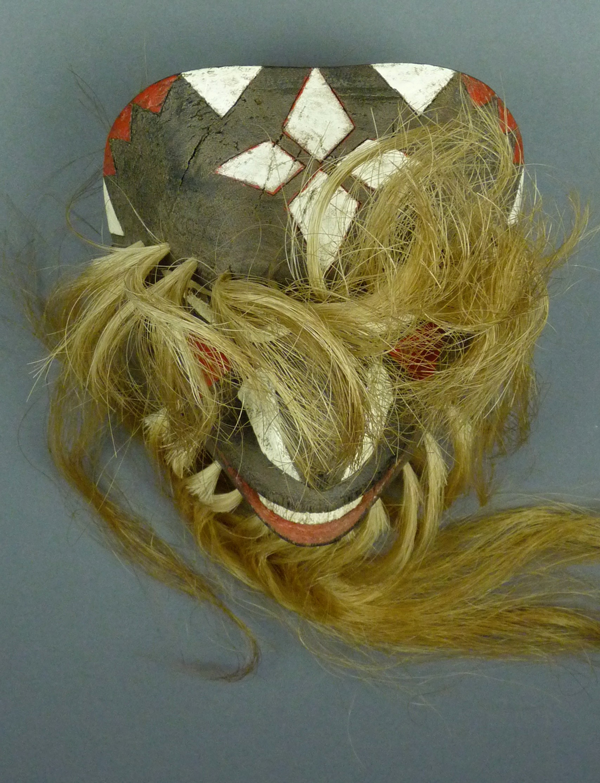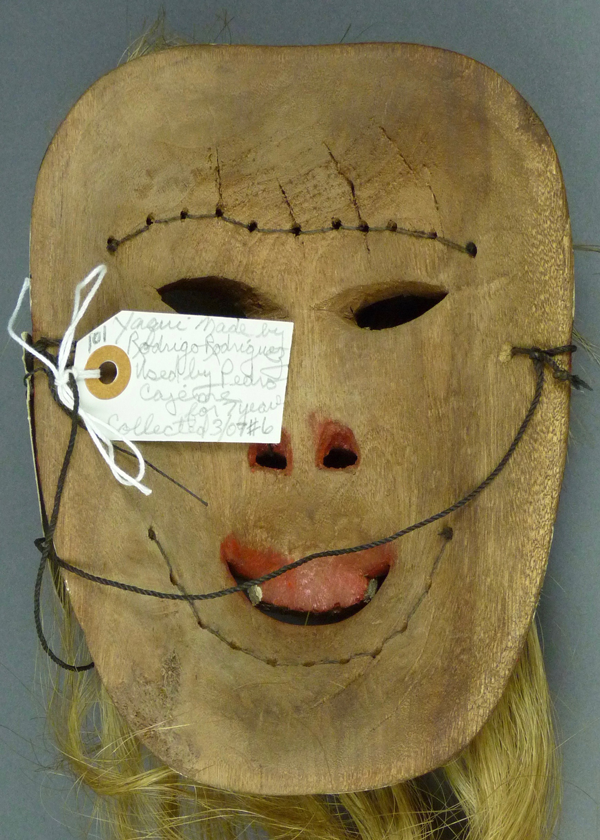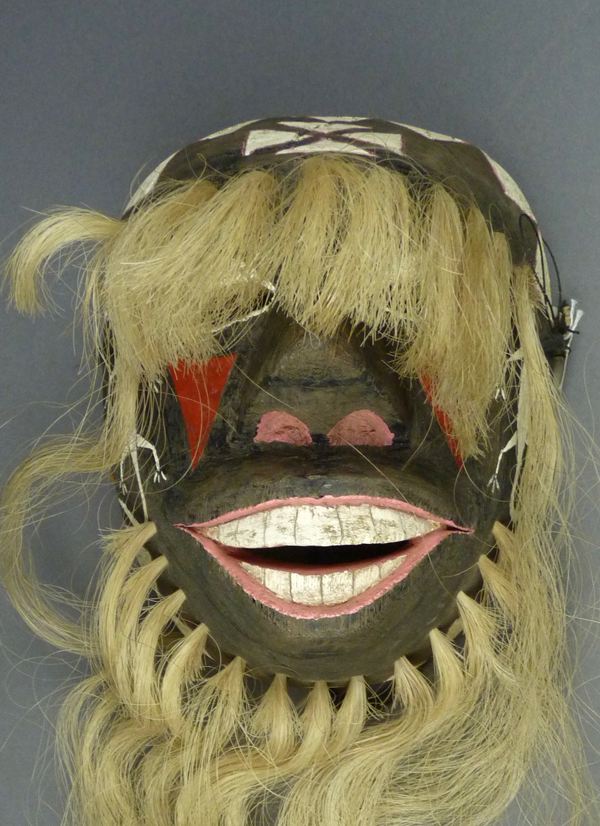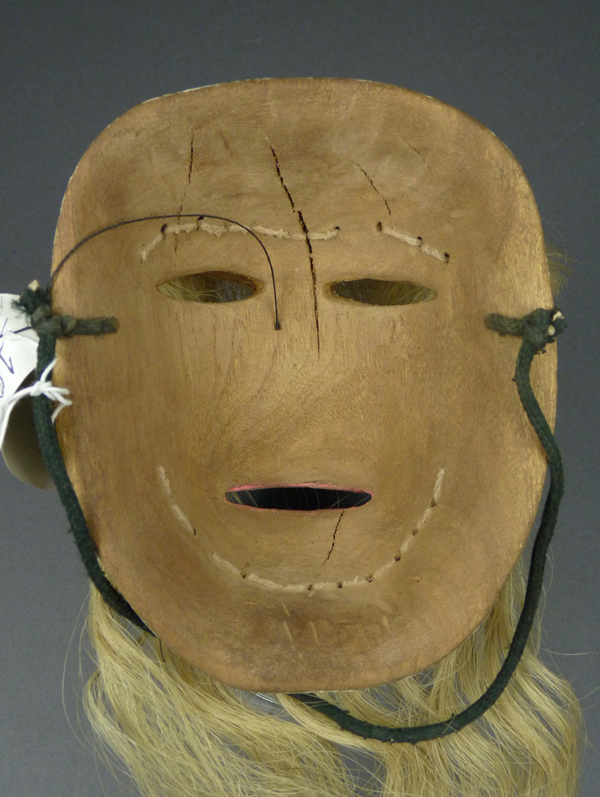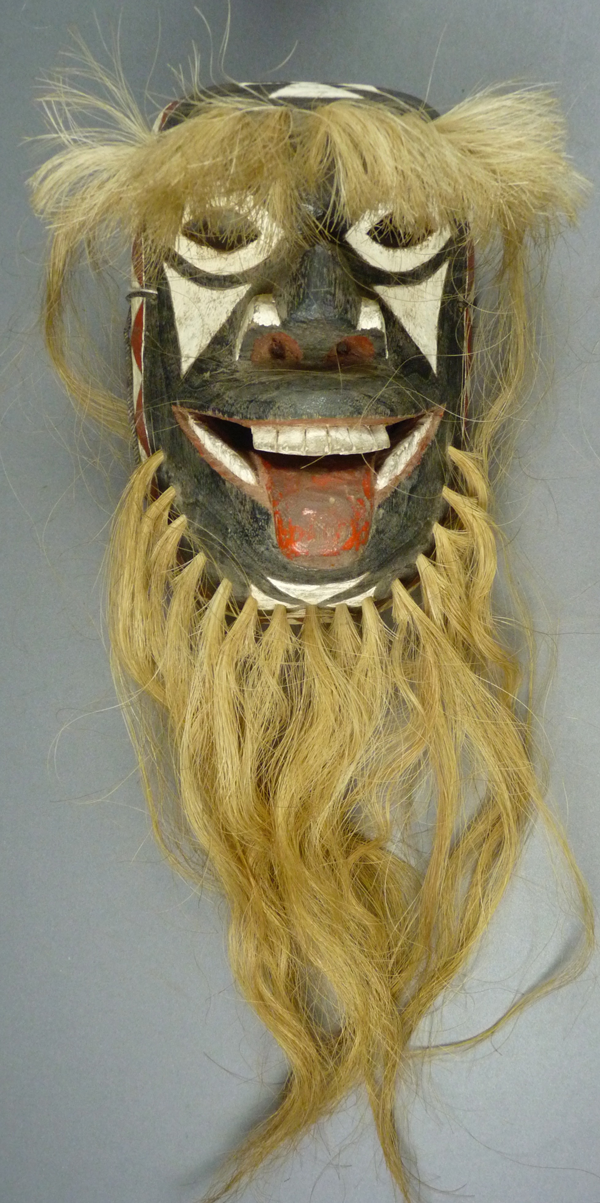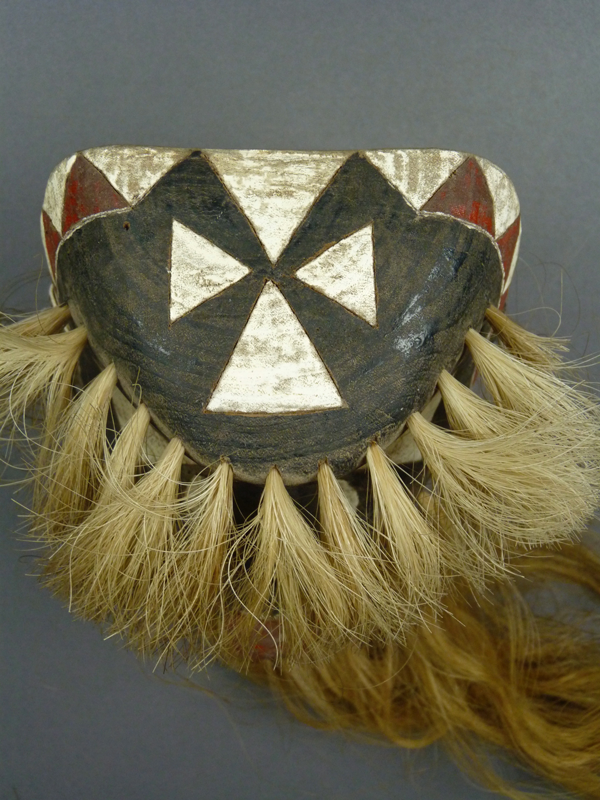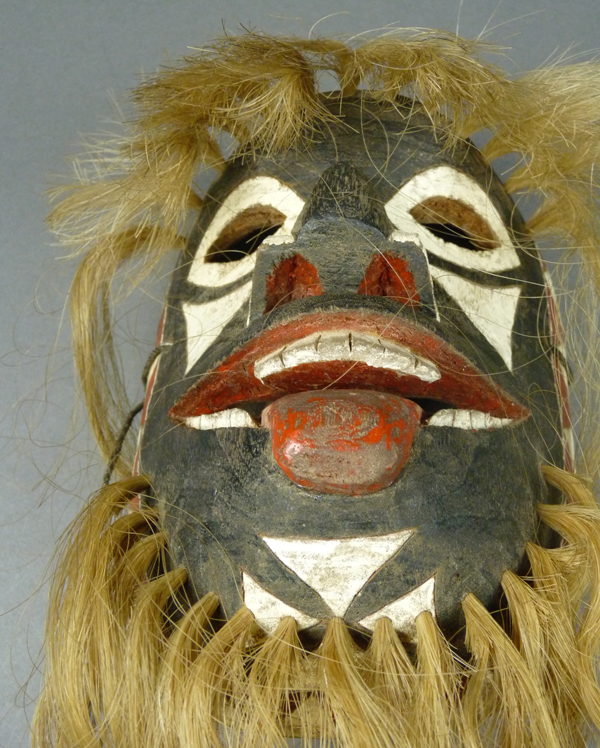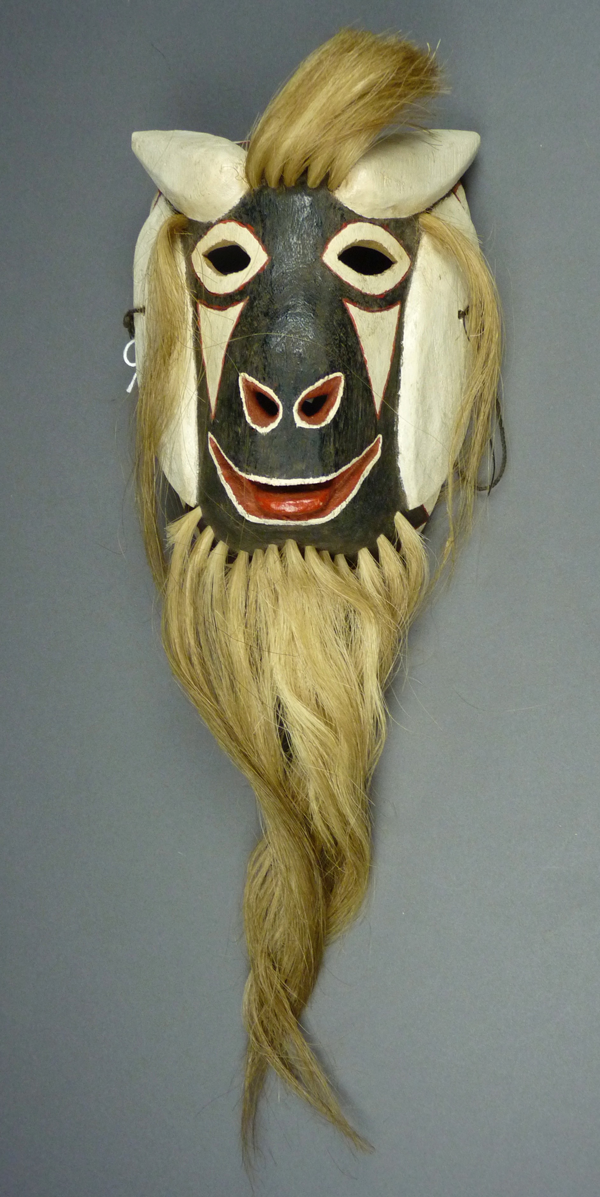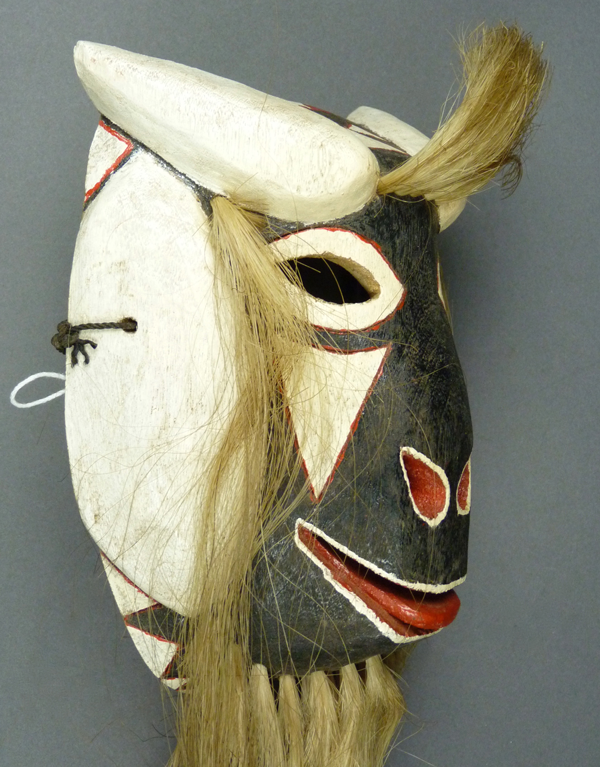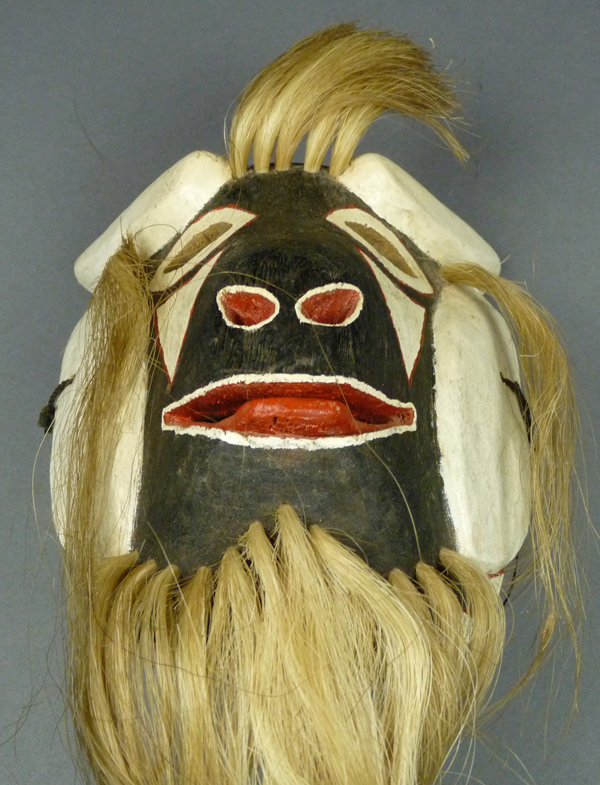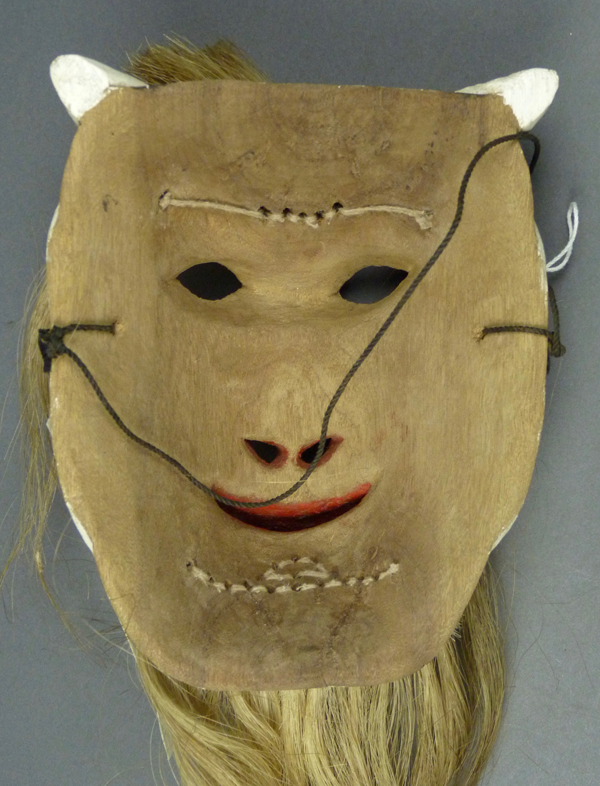Today I will compare made for sale and danced human faced masks by a Yaqui carver, Rodrigo Rodríguez Muñoz, beginning with one that I showed two weeks ago. Later I will end with a goat faced mask by Rodrigo.
I purchased this mask in June, 1999 directly from Barney Burns and Mahina Drees. They had obtained it one year earlier from the carver. There is much about this mask that is typical of Rodrigo’s style, whether he was carving for traditional use or for sale to outsiders. For example there is the flat upper surface, the cross painted there, the rim design, the eyes, and the triangles under the eyes. What is missing from this mask, compared to the danced canine masks in last week’s post and the danced human faced and goat faced masks that follow is the dynamic vigor found in the carving of those masks, as well as the simplicity of ornamentation.
In other words, these made for sale masks are carefully carved, they have attractive decoration that they share with Rodrigo’s dance masks, but they lack the exaggerated mass or power of those intended for dancing. They almost seem two dimensional, compared to the danced masks.
The carving of the mouth illustrates this difference, Rodrigo’s masks for dancers tend to have open mouths with an air passage and projecting elements, not these low profile closed mouths. Yet there is nothing deficient about this mask, it is carefully carved, nicely painted, and complete.
This mask is 9½ inches tall, 5½ inches wide, and 2½ inches deep.
The back of this mask is long and shallow, like Rodrigo’s usual made for sale masks, and the tiny nostrils would provide scant ventilation. On the back, written in pencil, is “Mexico, RR, 6/98.”
When I saw this next mask, I bought it immediately, as I perceived it as a representation of a popular cartoon character, Homer Simpson™.
There are rhinestones on this mask too.
The forehead is flat and the mask has Rodrigo’s usual cross.
This mask is 8¼ inches tall, 5 inches wide, and 2¾ inches deep.
From the back, this mask is slightly narrow in comparison to the dance masks, a characteristic that we observed in Rodrigo’s canine made for sale masks, last week. Of course it is marked RR, and dated November 2004.
Here is the first of three danced human faced masks by Rodrigo, all collected by Barney Burns and Mahina Drees. They purchased this one in 2007 after about 8 years of use.
Note the simplicity of this mask’s decoration.
The rim design is understated but attractive, with larger triangles alternating with smaller ones (VvvvVvvvV). The mouth has a subtle but interesting shape.
The forehead cross, constructed from four kite-shaped diamonds, is less usual for Rodrigo.
This mask has the broad back and the air passage that Rodrigo characteristically provided on a mask intended for a dancer, and this back is stained from use.
Here is a second danced human faced mask by Rodrigo. It was collected in the 1990s after having been danced for 10 years.
Like the last mask, this one has an open mouth with a sophisticated design.
The large nose and the bulging mouth jut out in front of the face. There are inscribed lizards on the sides.
The flat forehead and this cross tend to be constants for this carver.
This is another broad mask for a dancer. These cracks suggest that the cottonwood root that was used for this mask was carved before the wood had cured, so that it continued to dry after the mask was carved. The mask appears to be perfectly stable and of course there is staining around the rim to corroborate the history of 10 years use.
The third human faced mask (B/M #405) was labeled by the Rodríguez family as the work of Preciliano Rodríguez Cupis, the father of Rodrigo, but the design details are so characteristic of Rodrigo that I choose to attribute this mask to his hand. It was collected in 2004 after having been danced for 10 years.
This is such a handsome mask,
The nose reminds one of several Rodríguez carvers, Rodrigo included.
The integration of the cross with the rim design is so characteristic of Rodrigo, as is the absolutely flat forehead.
The large chin cross is unusual for all of the Rodríguez carvers. Unfortunately I neglected to take a photo of the back of this mask.
Rodrigo Rodríguez Muñoz is so consistent in his style. I will show one of his traditional goat Pascola masks to close out this series. This mask was danced for eight years before it was collected by Barney and Mahina.
Both the ears and the horns are carved in relief. As one often finds, this goat mask has been provided with a small protruding tongue.
Note how Rodrigo continued the rim design completely around the mask, even though it was interrupted by the ears and the horns.
He inscribed and painted his usual cross on the forehead.
The mouth has an opening to provide air to the dancer.
The back is stained from use. The air passages are easy to see from the back.
In summary then, Rodrigo’s danced masks are larger and simpler, compared to the made for sale masks, but they tend to use the same designs. An open mouth funnels air to the dancer, while the made for sale masks generally lack adequate ventilation channels. The backs of the masks carved for dancers are designed to accommodate a broad face.
Next week we will begin to compare the made for sale and danced masks of Jesús Rodríguez Muñoz, the brother of Rodrigo.

